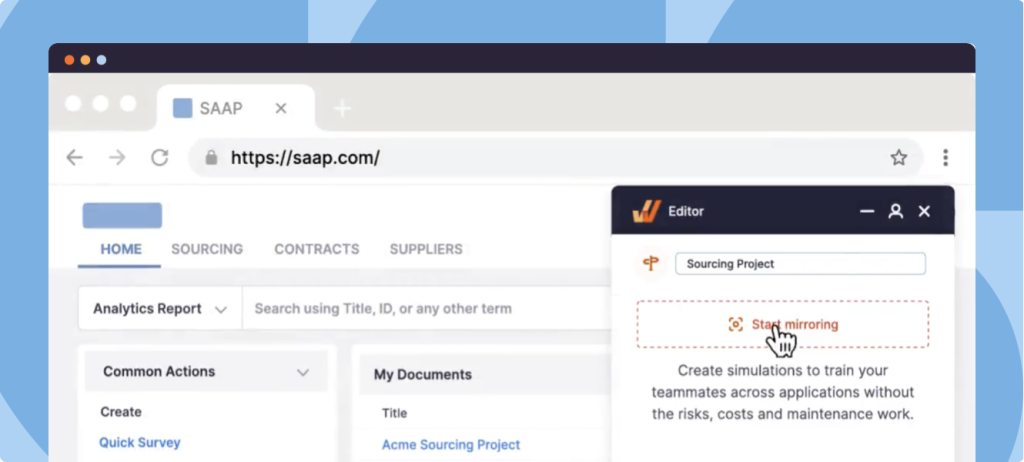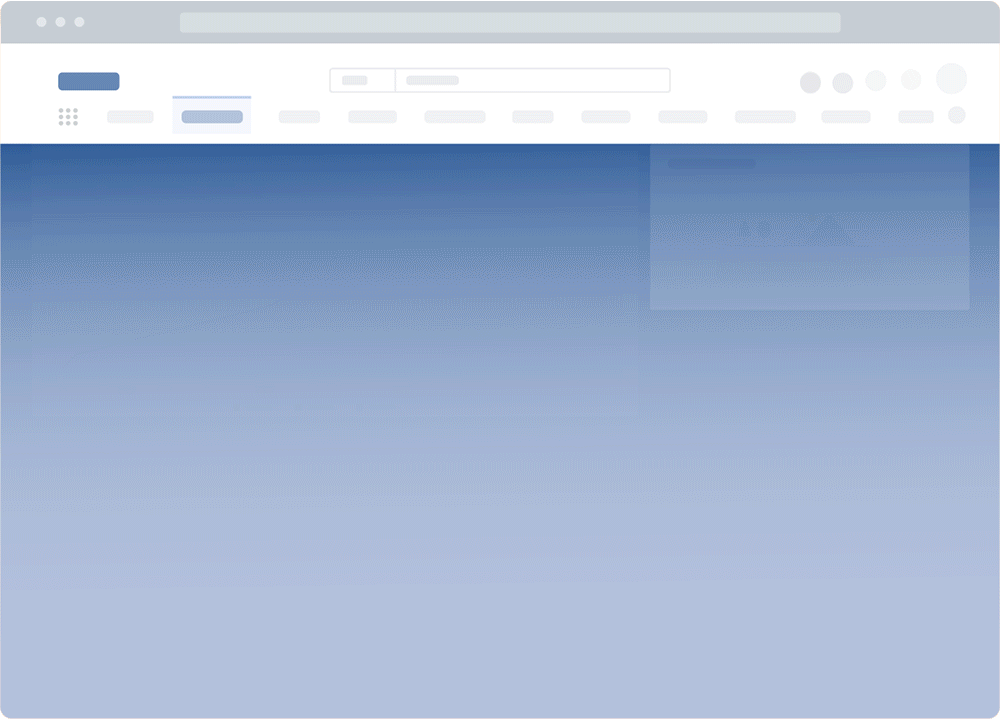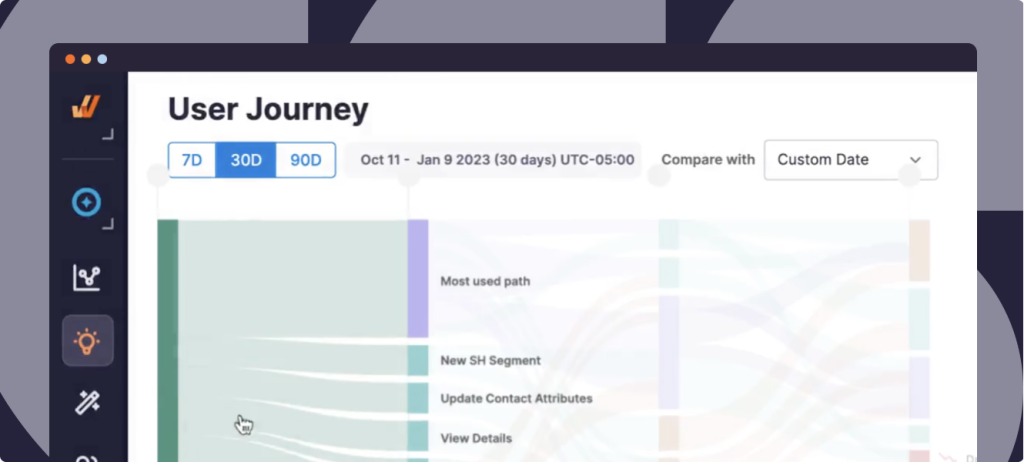Navigating change is difficult, whether it’s new technology, team structuring, or any other workplace-related change. It’s often due to the emotional side of change management, which causes confusion, frustration, and fear when traditional processes and personal habits are disrupted.
The Satir Change Model is a well-known change management model developed by Virginia Satir that highlights the human element of change initiatives. In this article, we’ll define Satir’s Change Model, break down its five stages, and explore how it can enable people to overcome the challenges that change projects present.
What Is the Satir Change Model?
The Satir Change Model outlines the five stages an individual (or workforce) experiences as they undergo change. It was developed by Virginia Satir, a family and systemic therapist, in the 1960s. Satir pulled from her experience working with families and corporate organizations to develop the five stages of the Satir Change Model, which has been applied to both personal and professional change management processes since.
The model helps us better understand the psychological, emotional, and behavioral aspects of change initiatives. By prioritizing people, it enables better project execution and adoption.
5 Stages of the Satir Change Model
The Satir Change Model consists of five stages: late status quo, resistance, chaos, integration, and new status quo.
Let’s explore each of Satir’s five stages of change.

1. Late Status Quo
The first stage of the Satir Change Model recognizes the status quo, or “the way things have always been done.” These methods or processes are habitual and comfortable for the team, but they may leave productivity gaps or be unable to help the team move to the next level.
Although individuals or teams may recognize that their current way of working may not be the most effective, they may still be skeptical of implementing change. At this point, they may not believe the benefit of change would outweigh the effort.
Here’s an example: An organization is using outdated software. Teams have discovered workarounds to make the software work for them, but these require additional effort and are prone to error. However, they’re comfortable with these workarounds and aren’t convinced implementing a new technology will solve their problem.
2. Resistance
The next stage marks the resistance or hesitation that initially comes with change. It disrupts the status quo and pushes individuals or organizations outside their comfort zone, causing denial, frustration, or anger.
Resistance to change can appear for various reasons, including fear, confusion, or a lack of communication. For example, when introducing new software, individuals or teams may feel that learning a new tool will be too complicated and time-consuming or that their jobs are at risk due to automation.
Change leaders must properly communicate change requirements and benefits, ensuring everyone understands why the change is necessary and how it can help the organization.
3. Chaos
The third stage is chaos, which often feels like confusion and disorder. After implementing the change, things start to feel disrupted and messy — processes and workflows don’t flow as smoothly, mistakes are common, and it can seem like the change isn’t working as well as initially planned.
During this stage, the best choice is to revert to the original way of doing things. But really, it’s an opportunity to discover what is and isn’t working and make changes.
For example, if your team struggles to adapt to new software, adjust plans accordingly by providing additional end-user training, meeting with those struggling to adapt to the change to hear their concerns, using analytics to analyze product usage and identify user friction points, and providing additional user support resources to help them overcome issues as they happen. Work with teams and individuals to communicate expectations and goals to keep everyone on the same page.
4. Integration
Next comes integration. After resolving issues, new methods and processes are integrated into the day-to-day routines and workflows. The impact of the change is finally seen, and the individual or organization starts to feel stable or productive again.
In the example of a new software implementation, the organization reaches integration when employees can complete processes and workflows without guidance, intervention, or other support. They’ve reached that “aha!” moment—i.e., the moment they realize why the change took place and understand the impact and value it will bring them and the organization.
The integration stage requires ongoing encouragement, support, and development. As the change becomes more accepted and habitual, look for new opportunities to refine processes to achieve better outcomes.
5. New Status Quo
The last stage occurs when the changes introduced become part of the new normal. Individuals and teams no longer need to be reminded of the changes; they become habitual.
At this stage, individuals and organizations are no longer conscious of the changes made. For example, the new software introduced becomes the status quo. Rather than comparing the change to how things were, they can work productively and efficiently with the changes.
But reaching a new status quo is not an endpoint. It’s a continuous cycle. Continue to monitor progress and identify opportunities to make improvements or introduce new changes.
Related Resources
Why Does Satir’s Change Model Work?
The Satir Change Model recognizes that change is often an emotional process, and recognizing and supporting those emotional needs can lead to better outcomes. Here are some of the top reasons why the Satir Change Model works so well:
- It prioritizes the human element: It can be nearly impossible to see the real impact of change if your team isn’t on board. By prioritizing change’s emotional and psychological effects and working to mitigate them, change leaders can reduce resistance and improve employee engagement.
- It is flexible: The Satir Change Model can be applied to changes of all kinds, big and small. It’s easy to customize to fit unique needs and to ensure change initiatives align with organizational goals.
- It recognizes the importance of collaboration: The Satir Change Model prioritizes the human element of change and encourages empathy and collaboration every step of the way.
- It supports feedback and evaluation: The model has built-in end-user feedback loops and evaluation processes, allowing quick adjustments that lead to long-term changes.
- It helps overcome resistance. Change often comes with confusion, mistakes, and a bit of chaos. This model accounts for things getting a little messy and provides a blueprint for moving through those challenging times without giving in to resistance.
How to Apply the Satir Change Management Model
Here’s how to get started applying the Satir Change Management Model.
1. Understand the model and its stages
Before implementing any changes, familiarize yourself with the model and its five stages. Knowing what to expect at each stage will help you prepare and plan for any challenges that come your way. Build communication plans, training programs, and support resources to help move employees through each stage with as little friction as possible.
2. Assess the current state (Late Status Quo)
Evaluate your starting point by auditing your current state. What needs to be changed to move forward? What information, resources, or tools does your team need to understand the value of this change? Use this as the foundation of your change announcement plan, on-going communication strategy, implementation, and success-tracking plan. Set goals, define metrics, and highlight gaps to fill throughout the change process.
3. Plan for resistance and chaos
encounter some challenging times during the change process can help you prepare.
For example, when new software or processes are introduced, employees should be provided with proper process documentation, trained on the new systems, and supported post-launch with the help of support resources to troubleshoot.
Organizations can prepare employees for new systems by creating sandbox environments for hands-on user training. This allows end-users to work through new processes and tasks without impacting live software usage—all pre-launch. Employees can experiment using the new system and provide feedback on changes before it launches.
With Whatfix Mirror, organizations can easily create replica application environments, allowing them to provide hands-on learning and user testing.


→ Easily create replica versions of your enterprise applications and workflows to provide hands-on user training, without technical dependencies.
→ Embed timely in-app experiences to drive knowledge retention and improve user training.
→ Auto-capture user engagement and training data to understand your simulated training’s impact.
4. Facilitate integration and experimentation
Integration happens when the new change has been fully adopted. Stay proactive by quickly identifying potential friction points and working to eliminate them before they deter users from integrating changes.
Facilitate integration by offering users personalized change management and training strategies based on personas and profiles. A more personalized approach can tackle friction points more efficiently and improve user adoption and integration rates.
Go beyond traditional training methods and enable end-users with just-in-time training and support. With a digital adoption platform (DAP) like Whatfix DAP, create in-app guidance like product tours, task lists, interactive walkthroughs, and tooltips to guide end-users through processes to learn in the flow of work.

5. Establish the new status quo
Solidify the change by making it part of your new day-to-day processes. Acknowledge all your team’s hard work and look for new opportunities to improve continuously.
Look for skills gaps that might appear, or find new ways to improve outcomes and keep your team engaged. Use behavior analytics to determine how change initiatives are integrated and sustained throughout your organization.
For example, with Whatfix Product Analytics, track user actions and events and analyze usage to understand how processes and tasks are being adopted. Use Journeys and Funnels to benchmark process completion rates and identify improvement areas. Compare how different user types or departments adopt processes to see if specific roles need additional support.


→ Gain insights into user engagement and analyze application usage with our easy-to-implement, yet powerful codeless event tracking.
→ Benchmark time-to-completion of core tasks and identify areas of workflow friction.
→ Capture user feedback with in-app surveys to mix qualitative insights with your quantitative data.
6. Continuous support and adaptation
Employees will need training and support post-implementation. Your new employees will need to be onboarded to your applications, and tenured team members will need support when processes are modified, role responsibilities change, new features are rolled out, and infrequently done tasks are completed.
With Whatfix DAP’s Self Help, organizations can enable employees in the flow of work with an in-app resource center that integrates with their internal knowledge base, help desk, and process documentation. Self Help overlays your digital workplace and allows end-users to search for any issue or process they need help with without leaving the software UI.

Use Pop-Ups to make team and company announcements, alert employees of new training programs or regulation changes, and drive adoption of new process changes or updates.
Challenges of Satir Change Model
Here are the main challenges that come with implementing the Satir Change Model.
- Time-consuming: Proper collaboration, evaluation, and implementation require a bigger time commitment than other change management processes.
- Need for skilled facilitation: The model requires experienced facilitators to implement training and guide change.
- Complexity: The model’s multiple stages make it complex and can create challenges for organizations new to the process.
- Lack of focus on technical aspects of change: To use this model for digital transformation, an organization might need to implement additional methodologies to account for the technical aspects of a change.
Change Clicks Better With Whatfix
Make it easier to navigate through changes with Whatfix. Whatfix‘s comprehensive suite of end-user analytics, contextual in-app guidance, and moment-of-need support emerges as a powerful enabler of effective enterprise change management. By leveraging these capabilities, organizations can not only navigate the complexities of change smoothly but also ensure that their workforce is adequately supported throughout the transition.
Explore what Whatfix can do for your change management efforts by scheduling a free demo with us today!






